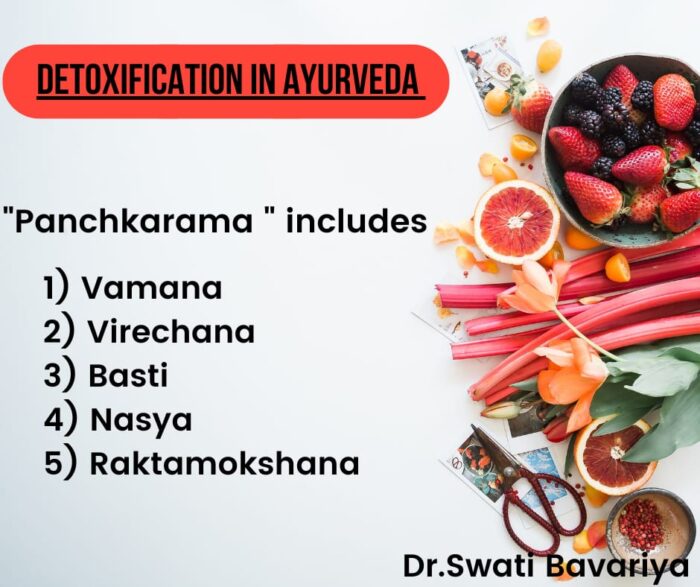5 Types of detoxification- Vaman
Virechana
Basti
Nasya
Raktamokshna
VAMAN – Vamana involves the administration of emetic substances, typically herbal decoctions, to induce controlled vomiting. This process helps expel the excess Kapha that has accumulated in the stomach and upper respiratory tract. The individual is closely monitored by a qualified Ayurvedic practitioner during this process to ensure safety and effectiveness.
VIRECHANA – The Virechana therapy involves the controlled intake of specific purgative substances. The choice of herbs and substances used for purgation depends on the individual’s constitution (Prakriti), current doshic imbalances (Vikriti), and the practitioner’s assessment. Commonly used substances include castor oil – Ricinus communis L. (Euphorbiaceae), Trivrit (Operculina turpethum), Senna leaves, and other mild laxatives.
BASTI – The procedure for Basti involves administering the enema through the rectum. A trained Ayurvedic practitioner prepares a specific mixture based on the individual’s constitution (Prakriti) and the condition being treated. The enema is administered using a syringe or special apparatus.
NASYA – Nasya is a therapeutic procedure that involves the administration of herbal oils, juices, or powders through the nasal passages. It is one of the Panchakarma treatments, a set of purification and detoxification therapies in Ayurvedic medicine. Nasya is primarily used to address disorders of the head and neck, as well as to promote overall well-being.
RAKTAMOKSHANA – Raktamokshana is a therapeutic procedure in Ayurveda that involves the removal of impure blood or toxic substances from the body.

Talk with us Google Business Profile
